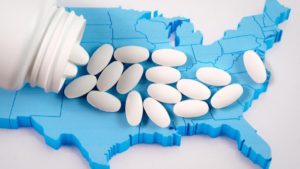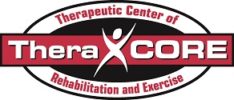
It is no surprise that there is a large opioid epidemic out there. Opioids are pain relieving drugs that have addictive properties and psychological effects and they are getting abused. People are in pain and they don’t know what to do. The increase in opioid overdose deaths has been on an alarming rise over the past year, being responsible for 68% of drug overdose deaths in the US in 2017. So how can we help do our part to help reduce this crisis…..Physical Therapy!!
Physical therapy can offer a variety of pain-relieving avenues.
Hot and Cold: Heat treatments, such as moist hot packs work best for soothing stiff joints and tired muscles. Think knee arthritis and low back stiffness. Heat enhances circulation, delivering nutrients to joints and muscles. Cold is best for acute, new pain such as an ankle sprain or tennis elbow symptoms. It helps to restrict blood vessels, slowing down circulation and reducing swelling. Cold treatment can also help decrease nerve pain.
Electric Stimulation: Interferential Current (IFC) and Transcutaneous Electrical Nerve Stimulation (TENS) are to forms of electrical stimulation that can be used for pain relief. This involves the physical therapist placing pads around the painful area. Depending upon the parameters that are selected, there can be stimulation of local nerve cells that can have a pain reducing effect. This happens in two different ways: 1) potentially blocking the transmission of the pain signals or 2) by stimulating the release of pain reducing endorphins. Another benefit of electric stim is an increase in localized blood flow. This helps rid the body of inflammation by bringing nutrients and oxygen to injured tissues.
Massage therapy: This form of therapy involves hands-on techniques to improve circulation, decrease tension, reduce stress, and promote relaxation throughout the entire body. The purpose of massage therapy is to target the source of the body’s pain by eliminating tense muscles, increasing flexibility, and providing relaxation to the affected muscles as well as the body as a whole. Massage also promotes circulation to the injured muscles, which increases nutrients and oxygen to the damaged tissues. This increased activity reduces stiffness and swelling in the muscles and joints to help reduce pain. Massage therapy also releases endorphins (pain-killing hormones), which boost the dopamine and serotonin levels in the body. These hormones promote healing, pain management, and improve feelings of euphoria. Who can say no to that?!
Physical Therapy: In pain? Seek out physical therapy! Physical therapists are movement experts. They should be using manual therapy techniques, stretching, and correcting movement faults to get the appropriate muscles working to decrease stress along the joints. Our goal as a PT is to correct movement impairments and teach the patient how to move well throughout the day. Physical therapy treatment is often coupled by the modalities that we have discussed earlier, and the treatment plan is designed with the patient to make sure all therapy and pain related goals are achieved.
Most importantly, you need to get moving! Pain leads to a decrease in movement. The less you move, the more stiff you feel. The more stiff you are, the more pain you feel. More pain leads to less movement and leads to chronic pain. Chronic pain can lead to using prescription drugs. You can break this cycle. Take control of your pain, don’t depend on a drug to mask it! Before you agree to an opioid prescription, consult with a physical therapist to learn about other treatment options.
Jen Bazan, PT, DPT
TheraCORE Physical Therapy
